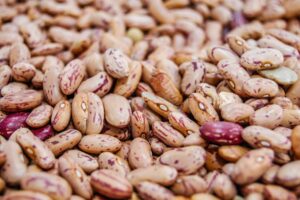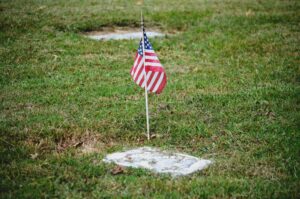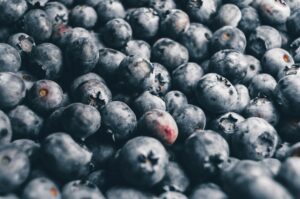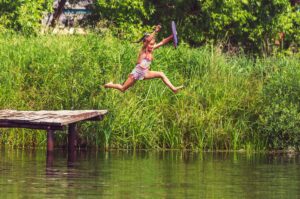 We all live with it these days… the steady rise in the price of food. We have to control it or it will, as the old saying goes, eat us out of house and home. Inflation is the direct result of the pandemic and its response, lockdown, supply chain disturbances and the mighty toll these factors have taken and continue to take on commerce and labor. I believe there are a few greedy bad actors, but that most of us are just trying to survive a perfect storm of catastrophes.
We all live with it these days… the steady rise in the price of food. We have to control it or it will, as the old saying goes, eat us out of house and home. Inflation is the direct result of the pandemic and its response, lockdown, supply chain disturbances and the mighty toll these factors have taken and continue to take on commerce and labor. I believe there are a few greedy bad actors, but that most of us are just trying to survive a perfect storm of catastrophes.
Like many others, I have decided that I have to do more about it. Difficult choices are sometimes involved. I now address my bi-weekly shopping as if battling a deadly foe. Our families and our livelihoods depend upon it.
Battle Plan:
Make and live on a budget. I calculated how much I spent in 2020 on foodstuffs prior to the pandemic. I used sales receipts. Then I added 2% to the total for each year since and set my budget. 2% per annum is the number the Federal Reserve shoots for in its efforts to curb inflation.
In short, I try not to spend any more on food now than I did in 2020 with 2% per annum/8% total added in. Drastic measures are required at times.
Identify, organize and use what I have on hand. This is probably the second most important activity to controlling cost. I refuse to let food that I have already bought and paid for go to waste. If I’m facing an expiration deadline, sometimes I go ahead and prepare the dish and freeze it. Some people can theirs, but that’s an investment of money I don’t need to make at this time.
I try to keep the fridge cleaned out and foods, snacks and leftovers that should be eaten first displayed up front. Otherwise, they get pushed to the rear and morph into food waste. I set a reminder on my phone to clean out the fridge on Thursday afternoon 5 p.m. as Friday is garbage day.
I try to keep my pantry well-organized. Cans and foodstuffs are organized by expiration and best by dates. Last night, the other cook in the family substituted a can of lentil soup that was approaching it’s best by date for another veggie. It worked well.
Carefully choose my vendor. I shop at a nearby supermarket, saving gas expense. The store offers good pricing, many house branded products and a wide variety of foodstuffs, many grown nearby.
I buy in bulk only when there is a high probability we will consume it.
I still shop some at Amazon and serve a little more canned fruit than I used to. Fresh fruit is better, of course, but substituting some canned fruit is okay. Amazon sometimes runs great specials on bulk canned fruits and veggies, but you have to be prepared to work with a shortened shelf life. I think Amazon offers a full refund if you can prove they sent you an expired item, but you would need to check with them on this. And they deliver heavy canned goods to your front door… free of extra charge if you are a Prime Member. (Remember to include your Prime Membership cost in your food budget.)
Consider package deals carefully: “My supermarket” also offers a wide variety of coupon and package deals, but, when I take advantage of package deals, I usually end up with at least one product my family refuses to try. So I don’t do this often.
Use House Brands When Justified. I use house brands when justified by quality, taste, nutrition and family acceptance. I buy house brand bread instead of the loaf I really prefer. It tastes just as good, but the slices are slightly thicker, so I compensate by eating only a half sandwich instead of a whole sandwich to make the loaf go just as far as the preferred loaf. I don’t expect other family members to do this.
Save on measurable expenses:
Mileage costs. AAA calculates the average cost per mile driven at 17.99 cents which includes most measurable auto expenses. This is, of course, not the same as the $0.67 per mile that IRS allows for business purposes deduction for 2024. If you shop for a restaurant business you own, you can deduct $0.67/mile driven in 2024 from your taxes owed. If you are shopping for yourself and your family, you get no mileage deduction, but you should include driving costs at 17.99 cents per mile as part of your food budget calculations.
Include sales taxes in food budget. Texas charges sales tax on a limited number of food items which is deductible from taxes if it rises to a certain threshold. You should consider finding out what this amounts to where you live and shop. It varies from state to state.
Comparison shop. I compare prices, calculating both overall and serving prices. Advertised bargains are not always the best way to go. Serving price = Total price including any tax divided by the number of servings listed on the nutrition label. Sometimes the more expensive item turns out to be the best value… assuming most or all servings will be consumed. (Serving size is usually 1/2 cup. Don’t worry if your husband is a BIG GUY who eats way more than 1/2 cup at a time, go ahead and use the item’s serving cost as listed in budget calculations. It works out in the long run.)
Make do with fewer luxury goods. One family member has taken it as his personal goal to catch enough fresh fish to limit the fish I buy. He’s doing a stellar job. I supplement by making house brand tuna salad more often, but remain conscious of not serving too much tuna that contains too many heavy metals.
Include more low-budget but high quality items in our food budgets. Eggs, dried beans and lentils, canned tuna and meatless pasta dishes offer a wide variety of excellent budgetary choices.
Stay informed about coming shortages, gluts and price hikes. My sister Lynn manages her food budget better than I do. We alert each other when we read about a coming shortage or price hike. Sometimes we act upon the news, but it’s probable that such responses increase, not decrease, supply chain disturbances… certainly not our goal, but some difficult choices have to be make.
Eat at home. The biggest food budget money saver is to eat at home. We rarely eat out or order in. Seriously. We got used to it during the lockdown, and we’ve continued it. We are blessed with two cooks in the family, so that the principal cook gets a much-needed break from time to time. I hate that our actions hurt the restaurant business recovery. But my family comes first. This amounts to a hard choice.
Best of luck with your own efforts to cut food inflation. I hope I’ve given you at least one hint that might help your efforts.


 I have worked closely with many physicians during my career in acute health care. They were all highly intelligent. Most enjoyed a large degree of common sense… only a few did not.
I have worked closely with many physicians during my career in acute health care. They were all highly intelligent. Most enjoyed a large degree of common sense… only a few did not.
 I used to do a lot of work in Louisiana. Once I hired a new consultant to work with a large multi-hospital system and went with her on her first visit. She was young, smart, personable, knew her coding stuff and was beautiful. She was a little nervous, but I had no doubt she would work out.
I used to do a lot of work in Louisiana. Once I hired a new consultant to work with a large multi-hospital system and went with her on her first visit. She was young, smart, personable, knew her coding stuff and was beautiful. She was a little nervous, but I had no doubt she would work out. We all live with it these days… the steady rise in the price of food. We have to control it or it will, as the old saying goes, eat us out of house and home. Inflation is the direct result of the pandemic and its response, lockdown, supply chain disturbances and the mighty toll these factors have taken and continue to take on commerce and labor. I believe there are a few greedy bad actors, but that most of us are just trying to survive a perfect storm of catastrophes.
We all live with it these days… the steady rise in the price of food. We have to control it or it will, as the old saying goes, eat us out of house and home. Inflation is the direct result of the pandemic and its response, lockdown, supply chain disturbances and the mighty toll these factors have taken and continue to take on commerce and labor. I believe there are a few greedy bad actors, but that most of us are just trying to survive a perfect storm of catastrophes.
 I want to tell you a little bit about one the key characters in the first book of the series, known simply as PIG PARTS. Jessie, our heroine Bess’s little sister, is a good child and a real nature lover.
I want to tell you a little bit about one the key characters in the first book of the series, known simply as PIG PARTS. Jessie, our heroine Bess’s little sister, is a good child and a real nature lover. Before I owned a Smartphone, I owned a Flip phone… a very good flip phone. I selected it carefully, planning to use it for years. It worked fine, great even, and I enjoyed using it. It was small, convenient, sturdy and protected in its own attached hard-shell plastic case. It didn’t break whenever I dropped it. Even better, it fit perfectly into my cross-body bag. It even met military specifications.
Before I owned a Smartphone, I owned a Flip phone… a very good flip phone. I selected it carefully, planning to use it for years. It worked fine, great even, and I enjoyed using it. It was small, convenient, sturdy and protected in its own attached hard-shell plastic case. It didn’t break whenever I dropped it. Even better, it fit perfectly into my cross-body bag. It even met military specifications.